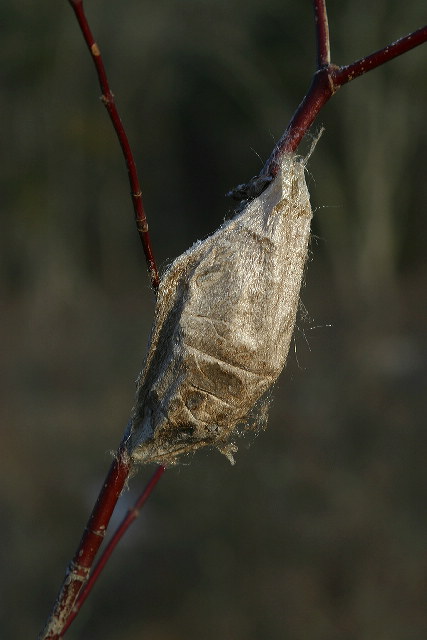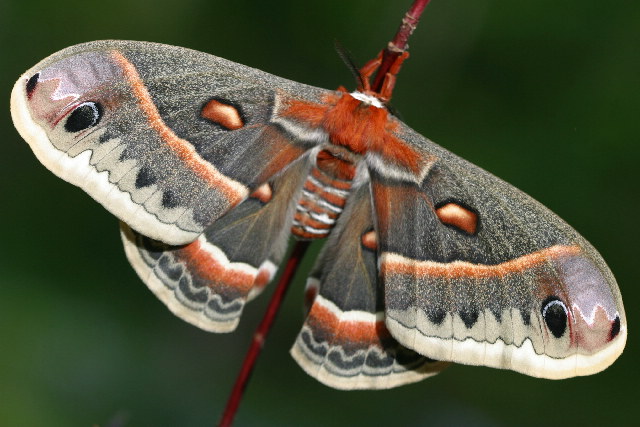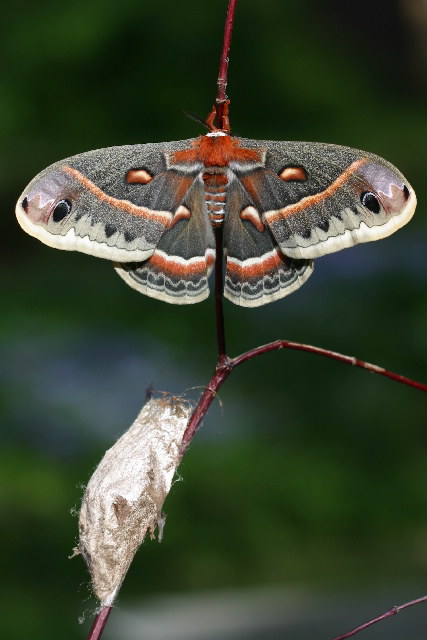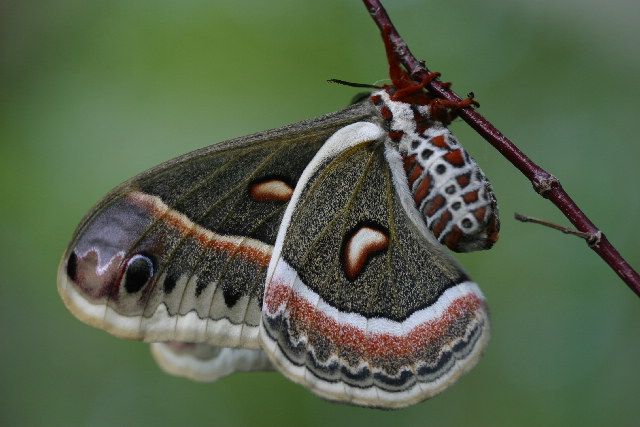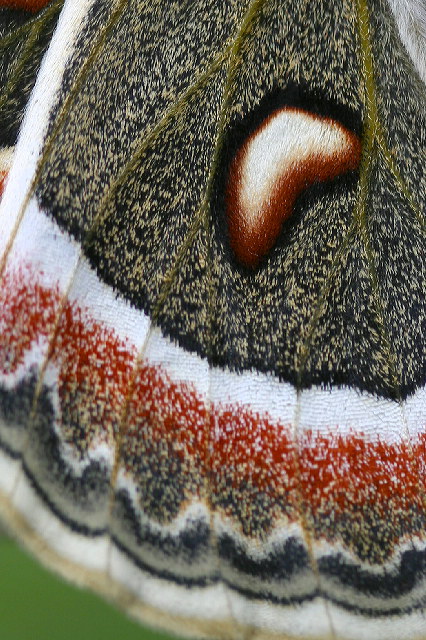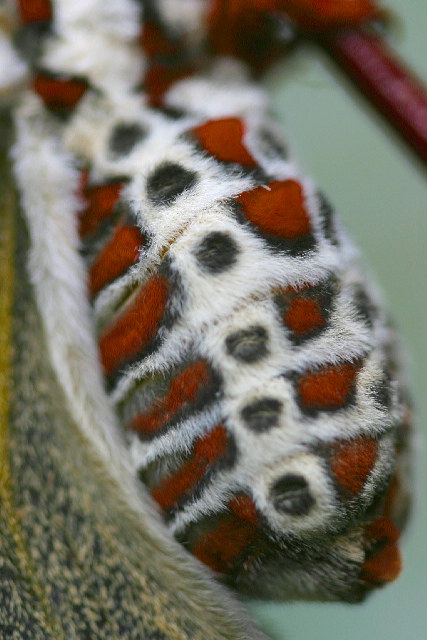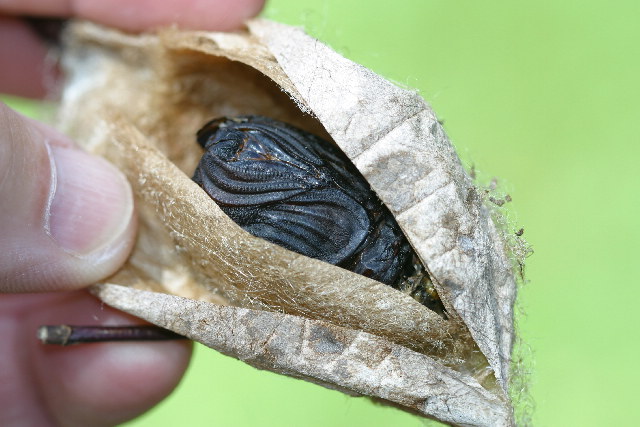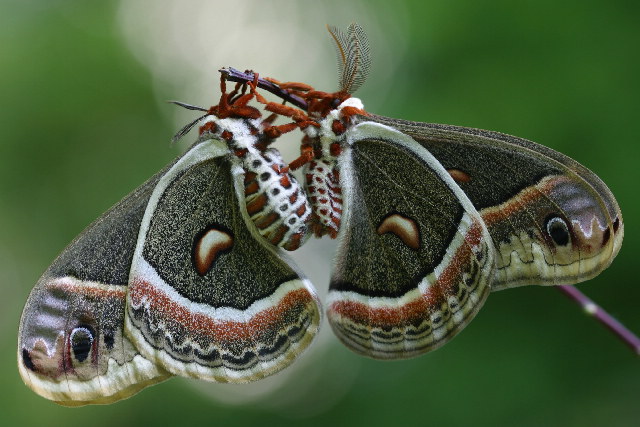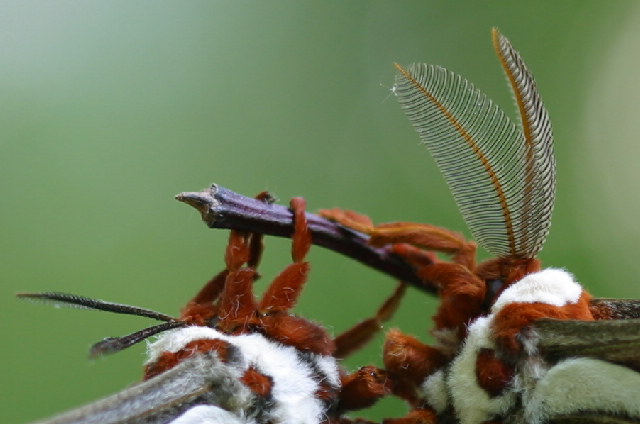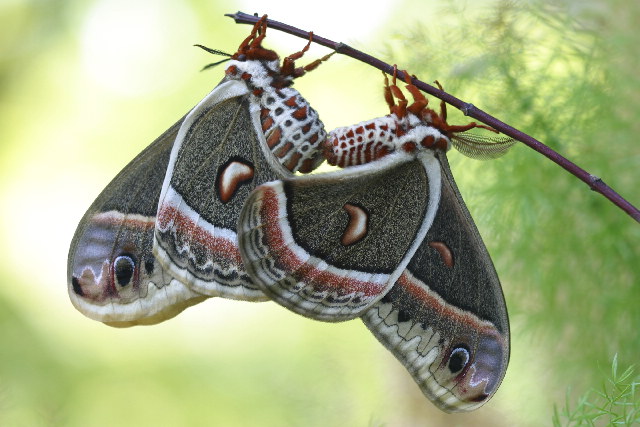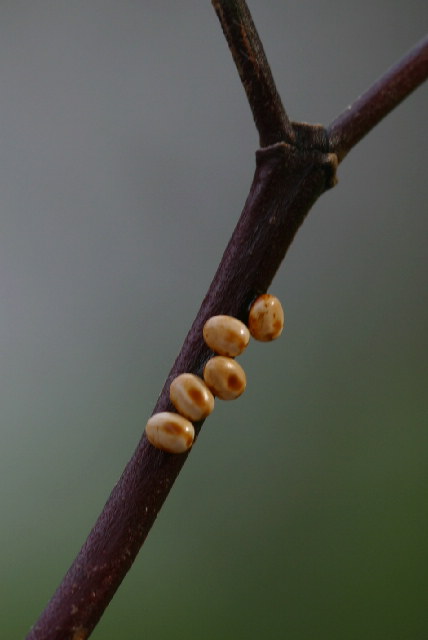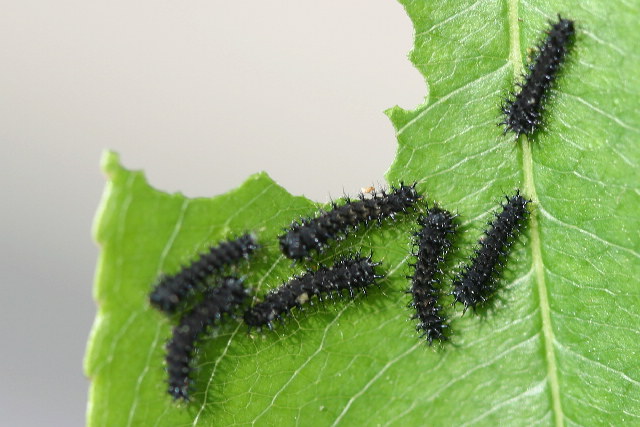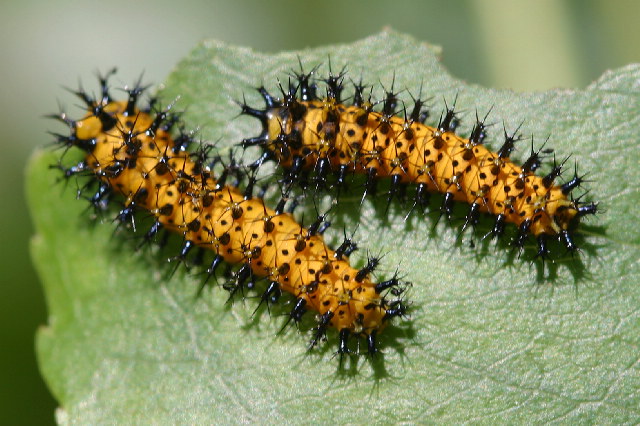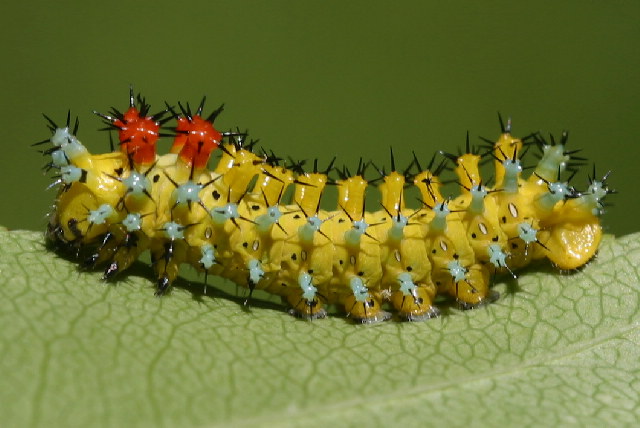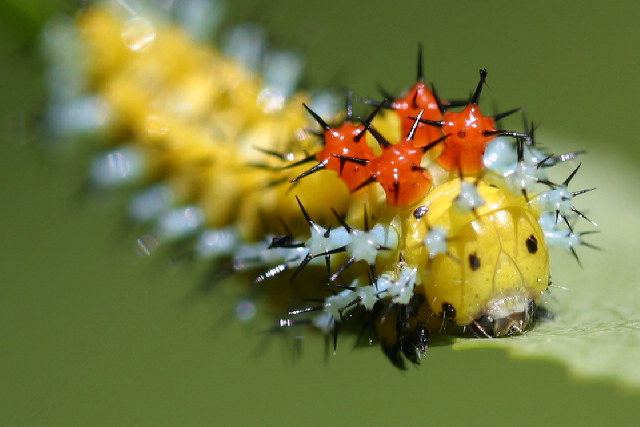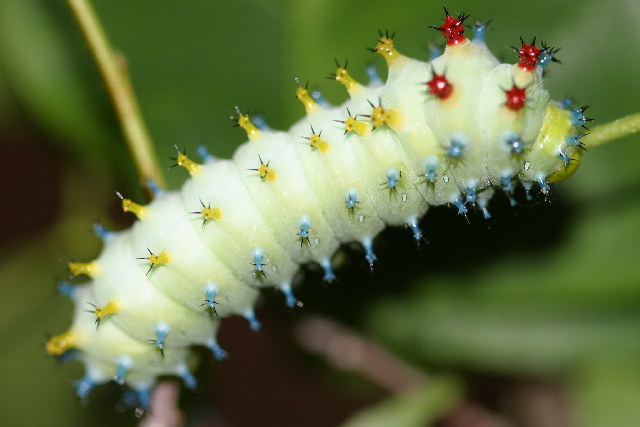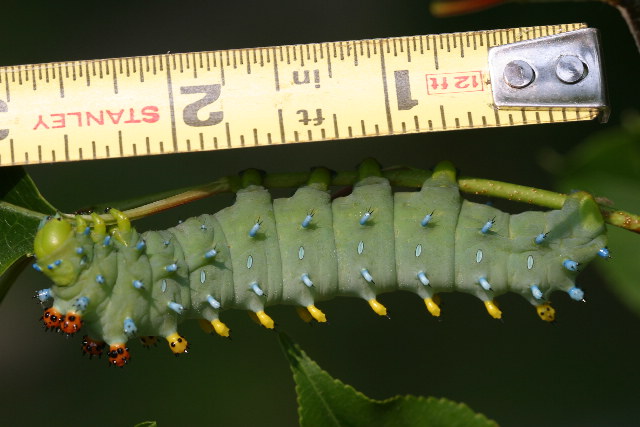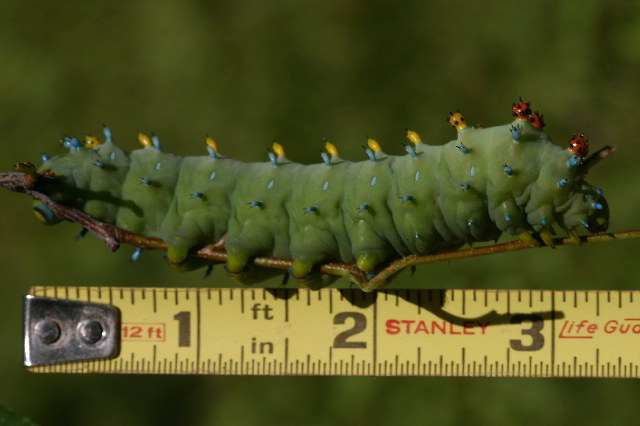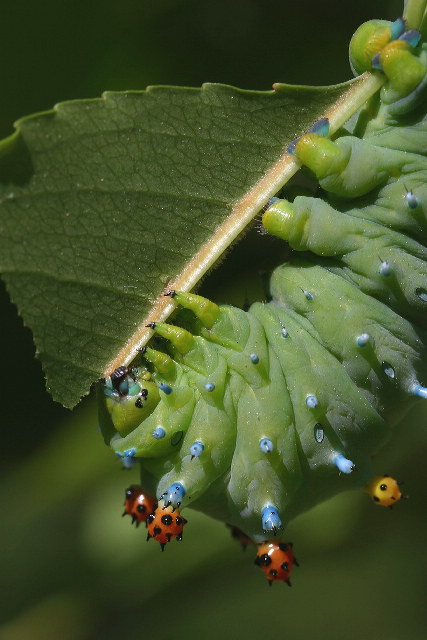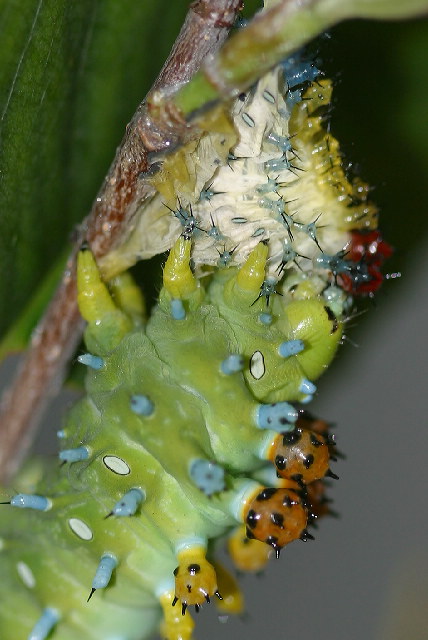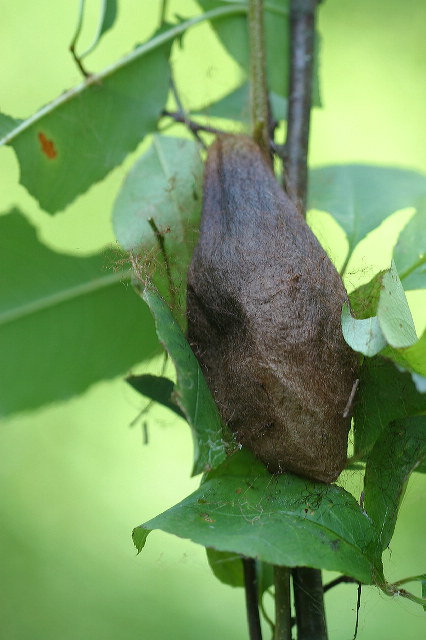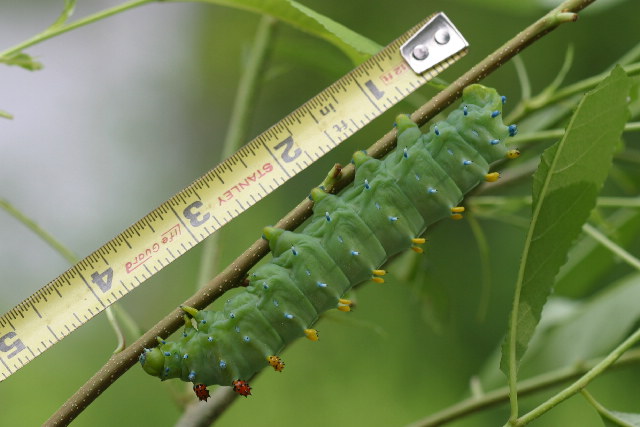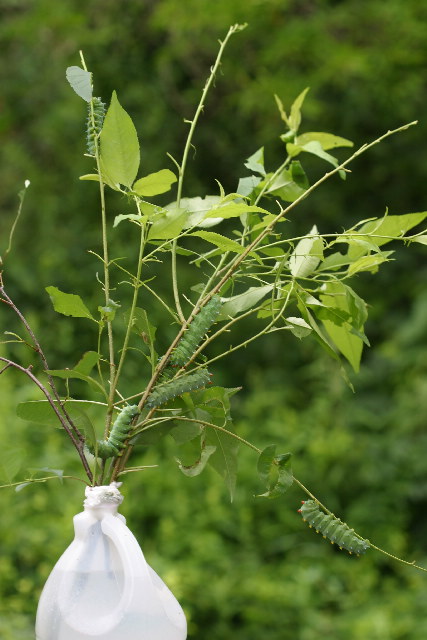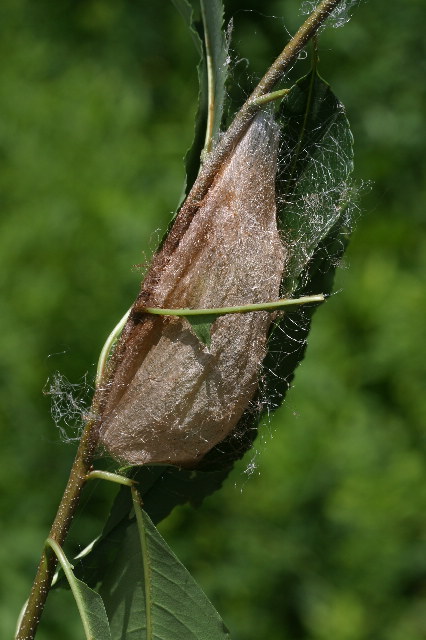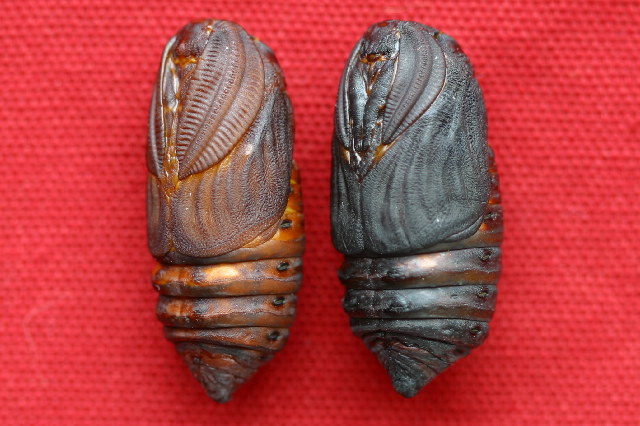Cecropia Moth (Hyalophora cecropia), Life Cycle 2007 Stan Malcolm Photos |
mCecropia Home Page Along the Air Line... |
March 10th. Cocoon found on a cherry shrub in Raymond Brook Marsh. Taken to be reared. |
May 21st. Female Cecropia Moth emerged. |
The moth has a 6" wingspan and will live only long enough to mate and lay eggs. |
|
|
The details of this moth are worth a closer look. Upper side of the front wingtip. |
Underside of the hindwing. |
"Furry" abdomen. |
Slitting the cocoon open reveals it's multi-layered construction: an outer layer of coarse silk separated from a rounded inner layer by a gap. Presumaby the gap provides some insulation, though a winter freezing cycle is required to break "diapause" before the moth can emerge. At the upper left between my fingers is an area of loosely woven silk that served as the path by which the adult moth exited the cocoon. On the surface of the empty pupal skin you can see features of the adult moth. Think of the pupa almost as a mold for the adult. At the upper left is the head and legs, framed by the curved, feathery antennae.In the center of the photo, you can see the shape of the moth's right front wing. At the lower right is a bit of the abdomen, and the cast off caterpillar skin. |
May 25th. The female Cecropia Moth has finally attracted a mate. The male is on the right with smaller abdomen and larger antennae. |
|
The male's antennae are huge and packed with pheremone detectors to help locate females. |
|
May 27th. The Cecropia female laid some eggs on cherry twigs and leaves before flying off at about 5:00 this morning. I was impressed by how strong and fast a flier it was, given the heavy weight of eggs it still carried. |
June 8th. The caterpillars hatched today. |
Closer view. First instar larvae are black and very spiny. I'm feeding them cherry, though they will eat the leaves of other fruit trees and willow. |
June 12th. As they grow, you can see a bit of yellow in their skin. |
June 18th. Second instar larvae show a lot of yellow. Tubercles are still black. |
June 23rd. Third instar larvae are bright yellow with bright red, yellow, and aqua blue tubercles. |
The "eyes" are simply colored dots. The real eyes are small and located close to the jaws. |
July 5th. Fourth instar larvae are green. |
July 10th. The first of the fifth instar larvae. |
July 14th. |
|
|
July 15th. A caterpillar eating its recently shed skin, thus recycling the nutrients in it. |
July 19th. The first cocoon was spun last night, 54 days after the eggs were laid and 42 days after the eggs hatched. This completes the life cycle. An adult moth should emerge from the cocoon next May or June. |
At four inches, this caterpillar is full grown and should spin a cocoon soon. |
Most of the remaining caterpillars are between three and four inches long. |
July 20th. At 9:30 P.M. I noticed a caterpillar beginning its cocoon. Hard to see and I didn't dare disturb the job in this delicate early phase, but the caterpillar had lightly tied some leaves close to a cherry stem. Most of its work was on wrapping the stem with silk. |
By 4:30 A.M., the rough outline of the cocoon was complete, though thin enough that I could still watch the caterpillar working back and forth inside. |
July 21st. By late morning, the outer cocoon seemed complete and was starting to darken. However, by holding it up to the light, it was clear that the inner cocoon was not yet in place. (I removed some lightly attached leaves for better visibility.) |
In this view, you can see how thoroughly the cocoon is attached to the stem. |
July 28th. The last caterpillar is spinning its cocoon. At this point, the foundation on the stem is strong and leaves are drawn close to help hold the shape. Now, the caterpillar is spinning straight vertical strands that will form the outer cocoon's loose "escape hatch" by which the adult moth will exit in the spring. |
December 14th. I extracted a male (left) and female pupa from their cocoons. You can clearly see what will become the adult moth's feathery antennae and between them the head at top and legs in between. Below the antennae you can see the front wings and then the abdomenal segments. |
The male's antennae are much larger than the females's. (The color difference is not significant.) In this rotated view, you can see a small crescent of the hind wing proturding from under the front wing. You can also see the row of abdominal spiracles - entry point to the insect's respiratory system. |
